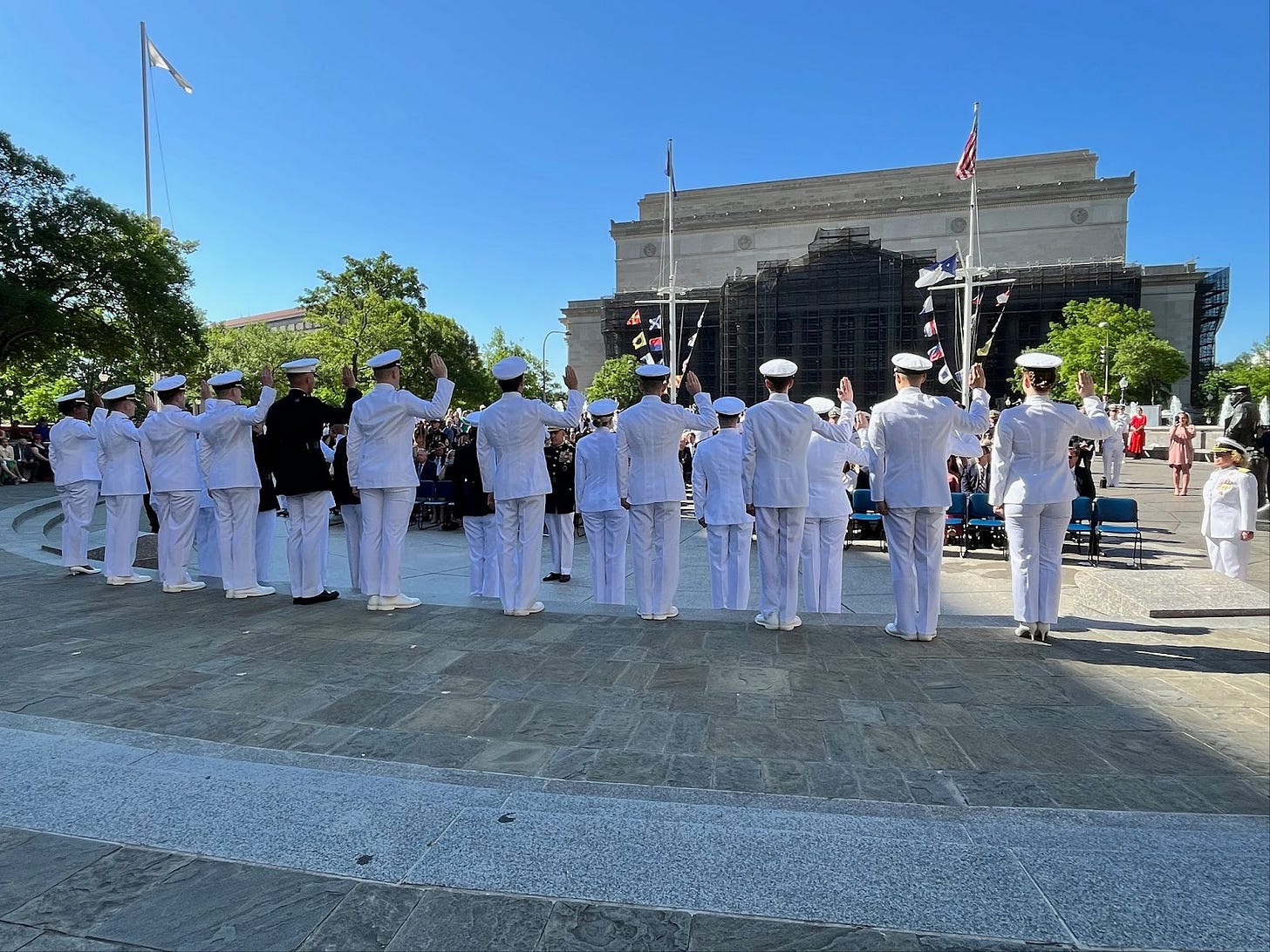Humans over hardware: Rules for AI
Three design principles for Artificial Intelligence, from the faith - and the Navy.
On May 19th, I had the honor of attending the commissioning of District of Columbia’s Naval ROTC officers as ensigns in the US Navy and second lieutenants in the US Marine Corps.
It was a spectacular bluebird day with a light breeze that made all the flags flutter. After the presentation of the colors, the ceremony opened with a Christian invocation.
The soon-to-be newly minted officers then swore the Commissioning Oath to support and defend the Constitution, while raising their right hands facing the actual Constitution, which is housed across the street from the Navy Memorial in the National Archives building.
I was there on stage representing my university, since we have about one fifth of the NROTC students in the District. It was one of those events where it is physically impossible to not swell a little with patriotism, pride and gratitude for these young Americans.
The commencement speaker was an impressive lieutenant general in the Marine Corps and he spoke to the new officers about leadership. Reading his resume and talking with him, he definitely knew what he was talking about.
He said some things that really struck me and helped me fit together a few puzzle pieces in my head that had been rattling around since a recent trip to Rome. I found myself taking notes on the back of the ceremony booklet.
His advice to them as officers, with people under their command, was encapsulated in a phrase he had coined: “heads up and hands free leadership.”
Don’t let technology obscure the person. “Engage them face-to-face, and kneecap-to-kneecap. Fully present.”
I wasn’t his target audience, I know, but a lot of what he said clarified for me some necessary design principles of artificial intelligence which I’d been thinking about from a Catholic perspective since I was part of a two day forum on artificial intelligence at the Casina Pio IV in the Vatican gardens last November. The purpose was to discuss the development of AI that could serve the Church’s mission.

